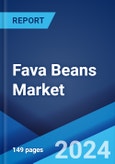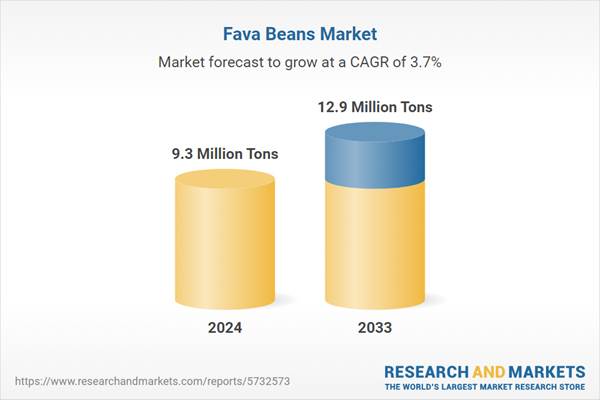Fava beans, scientifically known as Vicia faba, are a type of legume characterized by their large, flat, and elongated seeds enclosed in thick, leathery pods. They are fortified with essential nutrients, including protein, dietary fiber, vitamins, such as folate and vitamin K, and minerals like iron, potassium, and magnesium. They also contain antioxidants like flavonoids and polyphenols, which help combat oxidative stress and reduce the risk of chronic diseases. Their fiber content supports digestive health, helps regulate blood sugar levels, and contributes to cardiovascular health by reducing cholesterol levels and supporting healthy blood pressure. Their regular and moderate consumption facilitate red blood cell production and aid in preventing iron-deficiency anemia. In addition, vitamin K and magnesium in fava beans improve bone health and help prevent osteoporosis. They are used in various culinary preparations, including soups, stews, and salads to add a unique nutty flavor to dishes.
The rising prevalence of obesity, diabetes, and hypertension is catalyzing the demand for products formulated with fava beans. Apart from this, the expansion of hotels, restaurants, and cafes, coupled with the inclusion of fava beans in various dishes and beverages, is augmenting the market growth. Furthermore, food manufacturers are continually expanding their product portfolio by incorporating fava beans into new and exciting products, such as fava-based pasta, chips, and snacks, to attract a wider consumer base. Moreover, the easy availability of products infused with fava beans through online distribution channels is supporting the market growth. Besides this, ongoing research into fava bean cultivation, breeding, and processing techniques is leading to improved crop yields and product quality, which is supporting the market growth. In addition, the increasing international trade and rise in export activities are offering lucrative opportunities to farmers and suppliers of fava beans to reach global markets.
Fava Beans Market Trends/Drivers
Increasing demand for plant-based protein
The shifting consumer preferences for plant-based diets due to concerns about health, sustainability, and animal welfare represents one of the key factors catalyzing the demand for fava beans. Additionally, the rising adoption of veganism and vegetarianism is driving the demand for plant-based products like fava beans. Apart from this, the increasing awareness among individuals about the health benefits associated with reducing meat consumption is offering a favorable market outlook. Moreover, the environmental impact of meat production, including greenhouse gas emissions and land use, is encouraging consumers and food producers to explore sustainable protein alternatives. Fava beans are recognized for their ability to fix nitrogen in the soil, reducing the need for synthetic fertilizers. Furthermore, the rising prevalence of bird flu worldwide is driving the demand for plant-based proteins.Health and nutritional awareness
The rising awareness among the masses about the nutritional content of fava beans is driving their demand across the globe. Fava beans are packed with folate, which supports cell division and the prevention of neural tube defects during pregnancy. Additionally, the increasing participation of individuals in fitness activities and the escalating demand for high protein intake are favoring the market growth. Apart from this, the rising prevalence of digestive health issues is catalyzing the demand for fava beans as they contain dietary fiber that promotes digestive health by aiding in regular bowel movements and supporting gut microbiota. Furthermore, the increasing number of people looking to manage their weight and reduce their saturated fat intake is propelling the market growth. Moreover, the expansion of gyms, aerobic centers, and Zumba classes across the globe is creating a positive market outlook.Sustainable agriculture and crop rotation
The rising emphasis of individuals and farmers on sustainable agriculture practices and crop rotation is another major factor strengthening the growth of the market. Fava beans, as a leguminous crop, have nitrogen-fixing capability that eliminates the need for synthetic nitrogen fertilizers, which contribute to various environmental issues, such as water pollution and greenhouse gas emissions. Apart from this, farmers and agricultural organizations are increasingly recognizing the ecological benefits of incorporating fava beans into crop rotation systems, which is augmenting the market growth. Crop rotation is a time-tested practice that involves alternating different crops on the same piece of land over sequential growing seasons. Additionally, the escalating demand for products that are produced in environmentally responsible ways is creating a positive market outlook. Moreover, several bean companies are collaborating with local farmers and agricultural communities to promote sustainable farming practices. This includes providing training and resources to farmers to improve crop management and reduce environmental impact.Fava Beans Industry Segmentation
This report provides an analysis of the key trends in each segment of the global fava beans market report, along with forecasts at the global, regional and country levels for 2025-2033.Breakup by Region
- China
- Ethiopia
- Australia
- France
- Morocco
- Others
The market research report has also provided a comprehensive analysis of all the major regional markets, which include China, Ethiopia, Australia, France, Morocco, and others. According to the report, China accounted for the largest market share due to its diverse geography and favorable climate conditions. Additionally, the availability of vast landmass in Yunnan, Sichuan, and Heilongjiang are well-suited for fava bean cultivation. These regions experience moderate temperatures, sufficient rainfall, and fertile soil, which creates an ideal environment for fava bean growth. Apart from this, China has well-developed logistics networks, including ports and distribution centers, which facilitate the smooth flow of fava beans from Chinese farms to consumers worldwide. Moreover, Chinese farmers and agricultural experts are committed to continuous improvement in fava bean cultivation. They rely on advanced farming techniques, such as precision agriculture and eco-friendly pest control methods, to increase yields while minimizing environmental impact. Furthermore, they remain proactive in adapting to evolving market demands. They invest in research and development (R&D) activities to create fava bean varieties that are high-yielding and disease-resistant, addressing the challenges of sustainable farming while meeting consumer preferences. In addition, the government of the country provides support and incentives to encourage sustainable agriculture practices and research. This support includes subsidies, access to modern farming technologies, and initiatives to promote agricultural sustainability.
Competitive Landscape
Fava bean companies are actively involved in cultivating and farming fava beans. They are continuously investing in agricultural practices to optimize yields, enhance crop quality, and ensure sustainable farming methods. Additionally, they are expanding their product offerings beyond traditional fava bean varieties like fava bean snacks, spreads, and fava-based protein products to cater to diverse consumer preferences. Apart from this, they are implementing rigorous testing and quality control measures at every stage of production to ensure the safety and quality of their products. Moreover, many companies are focusing on the adoption of sustainable farming practices, packaging materials, and supply chain optimizations to minimize their carbon footprint. Furthermore, many companies are actively engaged in corporate social responsibility (CSR) initiatives focused on sustainability and supporting reforestation projects to reduce water usage in farming. They are also focusing on zero-waste production processes to align with environmental goals. In addition, various companies are actively involved in educating consumers about the nutritional benefits and culinary versatility of fava beans. This includes providing recipes, cooking tips, and nutritional information to encourage broader consumption.The report has provided a comprehensive analysis of the competitive landscape in the market. Detailed profiles of all major companies have also been provided.
Key Questions Answered in This Report
1. What was the size of the global fava beans market in 2024?2. What is the expected growth rate of the global fava beans market during 2025-2033?
3. What are the key factors driving the global fava beans market?
4. What has been the impact of COVID-19 on the global fava beans market?
5. What are the key regions in the global fava beans market based on the production?
Table of Contents
Table Information
| Report Attribute | Details |
|---|---|
| No. of Pages | 144 |
| Published | February 2025 |
| Forecast Period | 2024 - 2033 |
| Estimated Market Value in 2024 | 9.3 Million Tons |
| Forecasted Market Value by 2033 | 12.9 Million Tons |
| Compound Annual Growth Rate | 3.7% |
| Regions Covered | Global |









